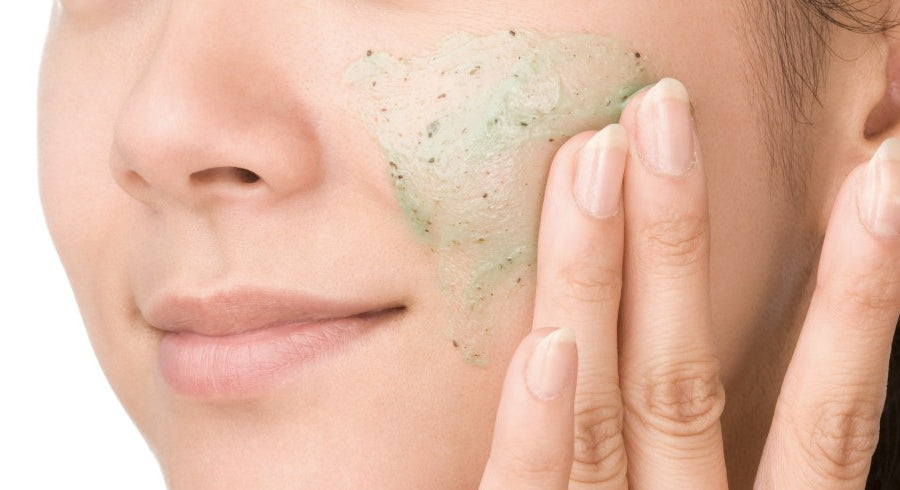THE COMPREHENSIVE, ULTIMATE, DETAILED, NERDY SKINCARE ROUTINE GUIDE FOR SKIN ENTHUSIASTS: Part 3 of 4

Part 3. Cleansing & Exfoliation
Ok- glad you're still with us. Now for the actual steps!
Skincare Routine Categories: Cleansing
The two overarching facets of your beauty routine should consist of cleansing and restoring (Part 4). There are three parts to cleansing:
Clean thoroughly and always be gentle!
1. Remove Make-up. Products are oil based, water based or cream based. Lip and eye removers are recommended if you use a lot of color cosmetics like mascara or lipstick or foundation that are hard to remove. You also have melting removers and oil based removers infused with active ingredients. The idea here is that oil removes oil.
2. Wash your face. Use lukewarm, running water. Wash morning and night, and if you work out during the day, make sure you wash after you sweat! Choose a gentle wash whether foam cleansers, milk cleansers that are recommended for drier skinned beauties or non-foaming cleansers. If you are targeting acne, I recommend looking for salicylic acid in your wash and/or cleansers that help balance your skin pH. If you are washing at night, make sure you remove the SPF and make-up thoroughly. Make-up wipes do not count! They have their purpose but should not substitute washing your face.
3.Deep Cleansing (Exfoliation). Exfoliation is the idea of removing dead skin cells which is key for deep cleansing and reducing the appearance of dull skin. There are three different ways we can approach the process:
A. Physical friction: the idea of using friction to remove dull skin by using a scrub with micro-beads, a gommage, brushes, etc. (Think buffering, like sandpaper.) For scrubs, I advise using the smallest, roundest beads possible as there are many scrubs containing sharp, coarse and uneven ingredients that will cause small tears that are not visible to the eye but are damaging. Gommage is a drying paste that also uses friction to remove dead skin cells. There are many types of brushes from mechanical to manual, but the idea here is to be as GENTLE as possible, as these methods can often be abrasive.
B. Chemical method: (AHAs, BHAs, glycolic acids): the idea of dissolving dead skin cells, so that the softer, younger-looking skin underneath is revealed. The advantages of this type of exfoliating is that it will unclog your pores. If your main focus is on the skin’s surface (and you don’t suffer from sensitive skin, redness or blocked pores), an AHA exfoliant is a good choice if you are exfoliating as a part of the deep cleansing process. BHA and glycolic acid are often contained in products meant to be used during your routine as daily exfoliators. For example, you may have AHA in your face wash or in your creams. Sensitive-skinned beauties can avoid using them as frequently. In fact, if you are extremely sensitive, I would avoid chemical exfoliators altogether as certain AHAs and BHAs can be powerful and cause irritation and weaken the skin barrier. I like to use spot treatments with salicylic acid (a BHA) to treat blackheads as well as the occasional pimple/ acne.
C. Biological method: similar to the way chemical exfoliants work except enzymes break down protein to remove dead skin cells to reveal smoother skin underneath. This is personally my favorite way of exfoliating as it’s the most natural way to break down dead skin cells and most recommended for sensitive skinned beauties. However, this is also the most difficult method to handle at home and therefore less available on the market, as the effectiveness is temperamental and easily affected by the environment, pH balance, temperature, exposure to sunlight and the method in which it works. While best applied by an esthetician, the trick is to use a powder with a brush for the enzyme powder to lather the right amount (only a small amount is needed and even less water to lather correctly.) Then, allow steam to settle and give the enzyme time to work. I recommend doing this in the shower. Alternatively, you can use a warm cloth/towel to put over your face. After everything has dissolved, wash off with lukewarm water.
How often should you exfoliate?
Generally, the rule of thumb is to deep cleanse one to three times a week. Exfoliating properly will really give you that glow. There are exfoliating pads and leave on exfoliating products meant to be used as part of your daily routine, but please use these with care. If you have dry, sensitive skin, less will be more for you, as long as you can be consistent. Taking time to experiment is key so you know what works for you. Those with oily or acne-prone skin may benefit from exfoliating more often, and if you have mature skin, regular, routine deep cleansing should suffice.
Pro Tip: Try using Mask Moments on the days that you exfoliate. The combination of deep cleansing and restoration will give you that ultimate glasskin glow! Get on a Mask Moments subscription plan to help you stay consistent with both exfoliation and restoration/ replenishing.